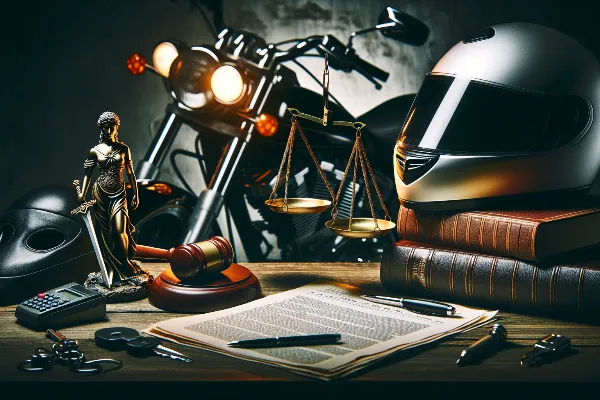Oregon Injury Law Blog
Tag: Oregon Law
- Home
- Oregon Injury Blog Tag: Oregon Law
- Page 1 of 2
An Insightful Guide on Wrongful Death Claims in Oregon
A guide to comprehending the aspects of a wrongful death lawsuit, including the legal definition, types of damages and evidence required to prove negligence or wrongdoing.
Read MoreTags:
bicycle accident injury car accident injury compensation criminal acts damages defective products duty of care legal definition medical malpractice motorcycle accident injury negligence oregon law pedestrian accident injury personal representative surviving family members workplace accidents wrongdoing wrongful deathMaximizing Your Compensation in Oregon Premises Liability Claims
Premises liability claims may allow individuals to recover damages for injuries sustained on someone else's property. These damages can include medical expenses, lost wages, pain and suffering, and potentially punitive damages if the property owner acted recklessly or intentionally.
Read MoreTags:
damages legal obligation lost wages medical expenses oregon law pain and suffering personal injury attorney premises liability claim property owners punitive damages safe premises visitorsRecovering After a Bicycle Accident: Essential Legal Tips for Oregon Cyclists
In the wake of a bicycle accident, cyclists in Oregon are often confronted with a range of concerns, from navigating legal rights to overcoming mental barriers for returning to cycling. This article offers comprehensive guidance on addressing these issues, emphasizing the importance of understanding Oregon's protective laws for cyclists, dealing with insurance companies judiciously, and pursuing both physical and mental health recovery. Pacific Injury Law Firm stands ready to assist individuals through their recovery journey with expertise grounded in state-specific regulations.
Read MoreTags:
bicycle accidents compensation claims insurance companies legal rights medical treatment mental health support oregon law personal injury attorney physical injuries safety measures trauma recoveryDeciphering the Three Levels of Proof Standards in Oregon Legal Cases
This text explains the different standards of proof in Oregon law. The lowest standard is "preponderance of the evidence" which is used in most civil cases. The middle standard is "clear and convincing evidence" which requires more evidence than the previous one and is often used in cases involving serious consequences. The highest standard is "beyond a reasonable doubt" which is used in criminal cases and requires the prosecution to prove its case to such a degree that there can be no reasonable doubt in the mind of a rational person.
Read MoreTags:
burden of proof civil cases clear and convincing evidence court criminal cases damages evidence forensic evidence fraud higher standard of proof legal case murder case neglecting their child negligence oregon law parental rights abuse personal injury cases preponderance of the evidence serious consequences standard of proof state termination of parental rights witness testimonyWhat to Do After an Accident with an Uninsured Driver in Oregon
Learn how to navigate the challenges of an accident involving an uninsured driver in Oregon and how Pacific Injury Law Firm can help you recover damages.
Read MoreTags:
claims process hitandrun insurance coverage json keywords uninsured motorist accidents legal rights lost wages medical expenses oregon law pain and suffering personal injury attorney vehicle repairsMaximizing Your Oregon Underinsured Motorist Coverage: Key Insights
Maximizing Your Oregon Underinsured Motorist Coverage: Key Insights
Read MoreTags:
at-fault driver bicycle accidents car accidents comparative negligence contributory negligence damages fault laws insurance liability liability insurance liability insurance policy motorcyle accidents motor vehicle accidents oregon auto insurance oregon law personal injury uim benefits uim carrier uim carrier's consent underinsured underinsured motorist (uim) underinsured motorist (uim) coverage uninsured uninsured motorist (um) uninsured motorist (um) policy7 Critical Mistakes That Can Ruin Your Personal Injury Claim in Oregon
In the aftermath of a car accident, knowing what not to do can be just as important as knowing your rights. Avoid these common pitfalls to protect your personal injury claim.
Read MoreTags:
atfault driver car accident compensation injury documentation insurance companies json keywords personal injury claim medical attention oregon law personal injury attorney social media truthfulnessEssential Guide to Oregon Car Accident Claims: Key Facts You Must Know
Navigating car accident claims in Oregon demands a nuanced understanding of state-specific regulations. This comprehensive guide elucidates five pivotal facts essential for claimants, including the statute of limitations, comparative negligence rules, and the role of personal injury protection (PIP) insurance. Empower your pursuit of rightful compensation with this indispensable insight into Oregon's legal landscape.
Read MoreTags:
comparative negligence financial compensation legal guidance noneconomic damages cap oregon law personal injury protection pip insurance statute of limitations underinsured motorist coverage uninsured motorist coverageNursing Home Fall Injuries in Oregon: Know Your Rights and Legal Options
In Oregon, falls in nursing homes are a serious issue affecting many elderly residents. This article explores the responsibilities of nursing homes to prevent such incidents and what you can do if negligence occurs.
Read MoreTags:
compensation elderly care fall injuries fall risk assessment json keywords nursing home fall legal rights negligent facilities nursing home negligence oregon law personal injury premises liability safety equipmentMust-Know Oregon Motorcycle Accident Laws for Riders
Oregon riders face unique legal rules after a crash. This guide explains key Oregon statutes, insurance requirements, and case law that shape motorcycle claims.
Read MoreTags:
attorney fees comparative fault helmet compliance insurance disputes insurance requirements json keywords motorcyclists risks lane splitting oregon law personal injury safety rules uninsured motorist wrongful deathCategories
Recent Posts












